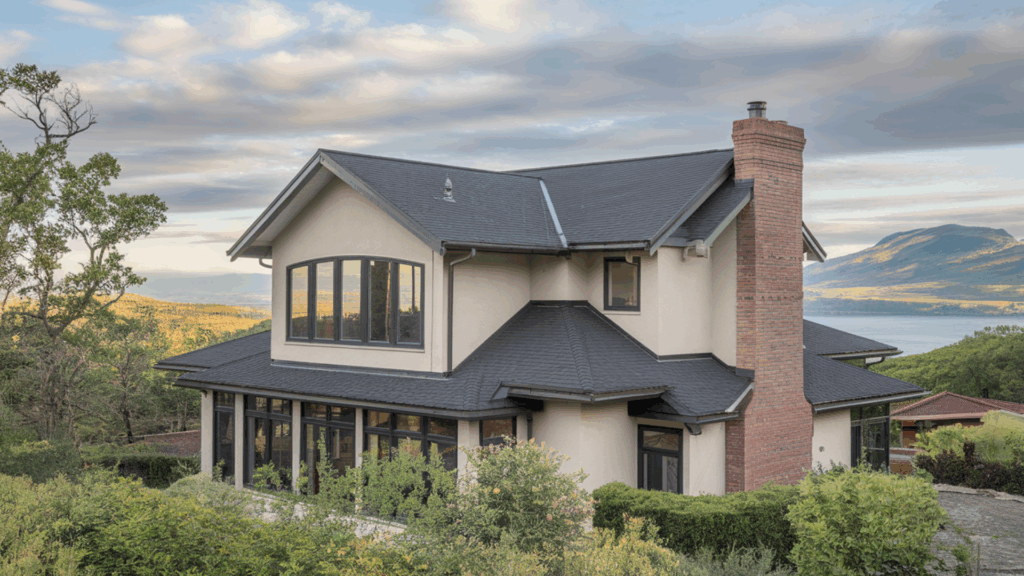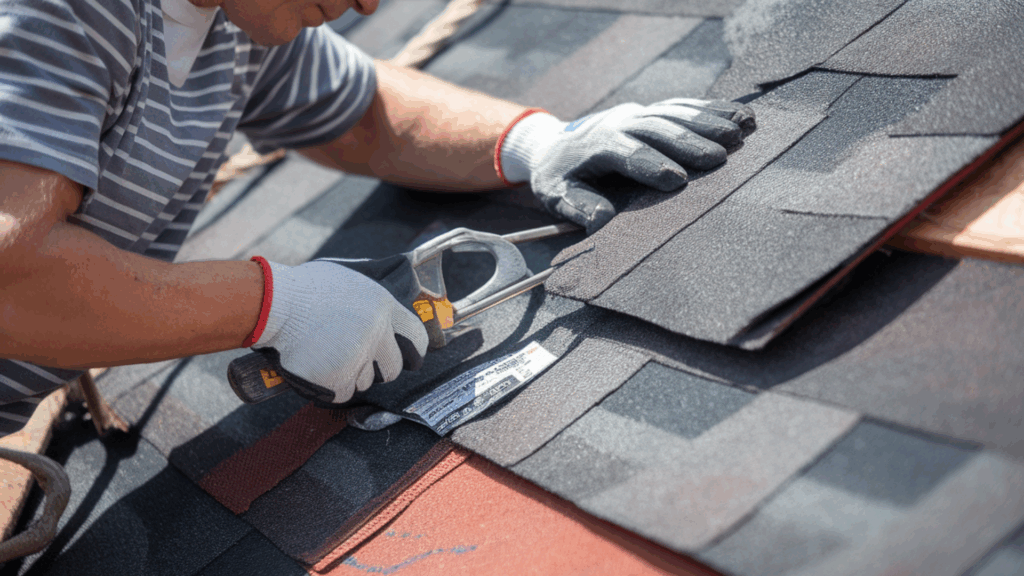At some point, almost every homeowner has to deal with a roof that’s seen better days.
Maybe it’s showing signs of age, has a few leaks, or just doesn’t look right anymore. When that time comes, you usually face two main choices:
- Put a new layer of shingles over the old ones (roof overlay), or
- Tear off the old roof and start fresh (full replacement).
Each choice comes with its own benefits, drawbacks, and price range.
Some are quicker and cheaper, while others offer longer-lasting protection and better long-term value.
My article breaks down what each method involves, the pros and cons of both, and what you can expect to spend.
If you’re weighing your options and want clear, simple information to help guide your decision, you’re in the right place.
Keep reading to learn which roofing route might make the most sense for your home.
What Is a Roof Overlay?
A roof overlay means putting new shingles right over the old ones. You don’t tear off the existing layer, you just cover it up. I’ve seen contractors offer this option because it saves time and labor.
They don’t have to remove the old materials or deal with as much cleanup. That means it’s usually cheaper and faster than a full roof replacement.
If your roof only has one layer of shingles and no major damage, an overlay can seem like a simple fix.
But the truth is: it’s not always the best choice in the long run. You can’t see what’s going on underneath, and that hidden damage might cause problems later.
So while a roof overlay might cost less upfront, it doesn’t always hold up as well over time. It’s a quick solution, but not always the smartest one.
What Is a Roof Tear-Off or Full Replacement?
A roof tear-off or full replacement means taking off everything, the old shingles and sometimes the underlayment too.
I’ve helped homeowners through this process when their roof was too worn or damaged for a quick fix. It takes more time and effort than an overlay, but it gives you a fresh start.
The best part is that your roofer can check for hidden problems like rot, soft spots, or water damage.
You can’t do that with an overlay. If something’s wrong underneath, this is your chance to fix it before it gets worse. It’s more labor and cost upfront, but it gives your home a solid, long-lasting roof.
If you want to do the job right and avoid surprises later, a tear-off gives you that clean slate.
Pros and Cons of Roof Overlay
A roof overlay can seem like an easy fix, especially if your current roof isn’t in terrible shape. But before you decide, it helps to look at the good and the bad.
Pros
- Lower cost upfront: I’ve seen many homeowners go this route to save money. You skip the tear-off work, so labor costs go down.
- Faster installation: Since there’s no need to remove the old shingles, the job gets done quicker.
- Less mess and fewer materials to haul away: You won’t have a big dumpster full of old roofing outside your home. That also means less cleanup when it’s done.
Cons
- Doesn’t fix hidden damage underneath: You won’t know if the decking is rotten or soft. That could cause trouble later.
- Shorter lifespan than a new roof: I’ve noticed overlays just don’t last as long. The base isn’t as solid, and the roof wears down quicker.
- May void warranties or go against building codes: Some shingle manufacturers and towns don’t allow overlays, or they’ll limit the warranty if you choose this method.
Pros and Cons of Tear-Off

If you’re thinking about replacing your roof, a full tear-off is the more complete option. I’ve helped homeowners choose this when they wanted a roof that lasts longer and holds up better over time.
Pros
- Full inspection of the deck: When the old shingles come off, your roofer can check the wood underneath. If there’s rot or soft spots, you’ll catch it early and fix it right.
- Better long-term performance and value: A new roof on a clean base holds up better. I’ve seen fewer issues over time when folks go this route.
- Can increase home resale value: Buyers like knowing the roof is new and solid. It’s one less thing they have to worry about.
Cons
- More expensive: Since there’s more labor and materials involved, the price goes up.
- More time-consuming: It takes longer to strip the old roof, inspect everything, and build it back up.
- Temporary mess and noise: You’ll have debris, noise, and a work crew around for a few days. It’s not forever, but it’s something to plan for.
Roof Overlay vs. Tear-Off: Which Is More Cost-Effective?
When comparing the costs of a roof overlay versus a full tear-off, consider both immediate costs and long-term value. Overlays are cheaper upfront, but tear-offs offer better durability and potential long-term savings.
| Factor | Roof Overlay | Tear-Off (Full Replacement) |
|---|---|---|
| Average Cost per Sq. Ft. | $3.00 – $7.00 | $5.00 – $9.00 |
| Total Cost (1,500 sq. ft.) | $4,500 – $10,500 | $7,500 – $13,500 |
| Installation Time | 1 – 2 days | 2 – 5 days |
| Durability | 10 – 15 years | 20 – 30 years |
| Future Repairs | More likely needed | Fewer issues over time |
| Resale Value Impact | Minimal | Often increases home value |
When to Choose Each Option?
If you’re unsure about which way to go, here are a few simple things to think about. These points can help you figure out what makes the most sense for your roof, your budget, and your future plans.
1. Roof Overlay Might Work If
You’ve only got one layer of shingles, the roof is still in fair shape, and you’re working with a tight budget.
I’ve seen overlays work well when there’s no major damage, leaks, or sagging.
It’s a quicker job and costs less upfront. But keep in mind, not all homes are a good fit if your local building code doesn’t allow overlays; that ends the conversation right there.
2. Tear-Off Makes More Sense If
There are signs of damage, like leaks, soft spots, or curling shingles; it’s time to go with a full tear-off. I usually recommend this when the roof is older or has had problems in the past.
A clean start gives you better long-term value and a longer-lasting roof. It also helps if you’re planning to sell your home or stay in it for many years.
3. Think About Codes and Structure
Before you make a decision, check with your city or county on building codes. Some places limit or ban overlays.
Also, think about your roof’s structure; not all roofs can handle the extra weight of a second layer.
And if you’re planning upgrades like solar panels down the road, a tear-off now might save you trouble later.
Conclusion
Both options, roof overlay and full tear-off, have their place. An overlay costs less and takes less time, but it won’t fix hidden problems.
A tear-off is more work and money upfront, but it gives you a longer-lasting, more solid roof.
I’ve seen both work well, depending on the situation. The best choice depends on your roof’s condition, your budget, and how long you plan to stay in the home.
If you’re planning to sell soon, an overlay might be enough. But if this is your forever home, a full replacement could be worth it.
Before you decide, I strongly suggest getting a professional roof inspection and a few quotes.
That way, you’ll know exactly what you’re working with, and you won’t be guessing. A clear roof plan now can save you time and stress later.

